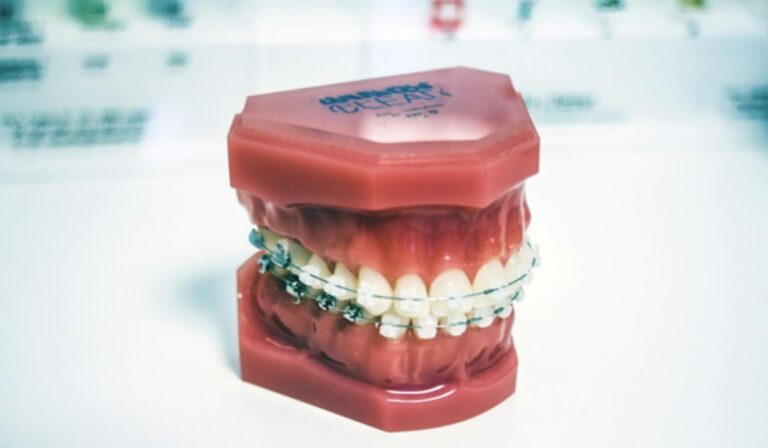Critical Illness Cover: A Comprehensive Guide to Secure Your Future
What Is Critical Illness Cover?
Critical Illness Cover is a type of insurance policy that provides financial protection if you’re diagnosed with a serious health condition. In the event of an illness such as cancer, heart attack, stroke, or other life-threatening diseases, the insurer pays out a lump sum, helping you manage medical expenses, mortgage payments, or even day-to-day living costs. This lump sum can offer peace of mind when you face challenges that affect your ability to work or generate income.
How Does Critical Illness Cover Work?
When you purchase a Critical Illness Cover policy, you pay monthly or annual premiums to maintain your coverage. Should you be diagnosed with a listed critical illness, the insurer will assess your claim and, once approved, provide a tax-free lump sum. This money can be used in any way you choose, whether it’s to cover medical treatments, household bills, or other financial commitments.
Some policies may also include additional features, such as a return of premiums if you do not make a claim or coverage for multiple claims in case of recurrent illnesses. It’s essential to read your policy thoroughly to understand the full scope of what is covered.
Why Is Critical Illness Cover Important?
Critical Illness Cover serves as a financial safety net during an emotionally and physically draining time. A diagnosis of a serious condition often comes with not only medical concerns but also significant financial burdens. Hospital bills, treatments, and specialized care can quickly accumulate, leaving patients and their families in difficult financial situations.
Having Critical Illness Cover in place ensures that you’re prepared for the unexpected. With the right coverage, you won’t have to worry about falling behind on mortgage payments, affording treatments, or maintaining your standard of living.
Types of Illnesses Covered by Critical Illness Insurance
The specific illnesses covered vary depending on the provider and policy. However, some of the most common critical illnesses typically included are:
- Cancer (often excluding less advanced cases)
- Heart attack
- Stroke
- Kidney failure
- Major organ transplant
- Multiple sclerosis
- Alzheimer’s disease
- Parkinson’s disease
- Coronary artery bypass surgery
- Severe burns
It’s important to review the policy details to understand which illnesses are covered and the severity of the condition required for a payout.
Who Should Consider Critical Illness Cover?
While anyone can benefit from Critical Illness Cover, certain individuals may find it particularly advantageous:
- People with Dependents: If you have a family or individuals who rely on your income, Critical Illness Cover can ensure their financial security if you’re unable to work.
- Homeowners: If you have a mortgage, a critical illness payout can help cover your monthly payments, preventing repossession if your health declines.
- Self-Employed Workers: Without sick pay or employer-provided health benefits, self-employed individuals often need additional financial protection to cover personal expenses during illness.
- Those Without Substantial Savings: If you lack a financial buffer to cover medical emergencies or lost income, Critical Illness Cover can act as your safety net.
Critical Illness Cover vs. Life Insurance
While Critical Illness Cover and life insurance are often discussed together, they serve different purposes. Life insurance pays out a lump sum to your beneficiaries in the event of your death, providing financial security for your loved ones. Critical Illness Cover, on the other hand, pays out if you’re diagnosed with a serious illness, providing you with funds to manage during your lifetime.
Many insurance providers offer combined policies that include both life insurance and Critical Illness Cover, allowing you to cover all your bases. However, it’s crucial to understand the differences and determine which is the most important based on your personal and financial circumstances.
Key Factors to Consider When Choosing Critical Illness Cover
When deciding on a Critical Illness Cover policy, it’s essential to consider several key factors to ensure you get the right coverage for your needs.
- Level of Cover: Determine how much coverage you’ll need based on your financial obligations. Consider factors such as mortgage repayments, personal debts, living expenses, and potential medical costs.
- Policy Exclusions: Read the fine print carefully to understand what illnesses or situations are not covered. Some policies may exclude pre-existing conditions or certain stages of illnesses.
- Premium Costs: Balance the level of coverage with premium affordability. Keep in mind that higher coverage amounts and broader illness lists will often result in higher premiums.
- Policy Flexibility: Some policies allow you to adjust the level of coverage over time. This flexibility may be useful as your financial situation or health status changes.
- Additional Benefits: Some Critical Illness Cover’s plans come with added benefits like access to second medical opinions, early payouts for less severe conditions, or coverage for children.
How Much Does Critical Illness Cover Cost?
The cost of Critical Illness Cover’s varies depending on several factors, including:
- Age
- Health status
- Lifestyle habits (such as smoking or alcohol consumption)
- Occupation
- Level of coverage chosen
Generally, younger, healthier individuals will pay lower premiums, while older individuals or those with pre-existing conditions will face higher costs. Comparing policies from different providers and assessing your specific needs will help you find the right balance between coverage and cost.
Can Critical Illness Cover Be Claimed More Than Once?
Some insurance policies allow for multiple claims under certain circumstances. For example, you may be able to make another claim if you’re diagnosed with a different critical illness after recovering from the first. However, this varies widely by provider, so it’s important to clarify this aspect before choosing a policy.
Multi-claim policies can provide added reassurance, especially if you have a family history of multiple critical illnesses.
What Happens if You Don’t Claim Critical Illness Cover?
If you don’t claim on your Critical Illness Cover’s policy, the premiums you’ve paid are generally not refunded. However, some policies offer a return of premiums as an added feature if no claims are made. This type of policy typically comes with higher premium costs but can be a worthwhile option if you’re seeking a balance between protection and investment.
Critical Illness Cover and Pre-existing Conditions
Most Critical Illness Cover’s policies have exclusions for pre-existing conditions. If you’ve been diagnosed with a health issue before purchasing the policy, that condition may not be covered. However, some insurers may provide coverage for pre-existing conditions at higher premium rates, or after a waiting period if your condition remains stable.
If you have a pre-existing condition, it’s essential to disclose it to the insurer during the application process. Failing to do so may invalidate your policy and result in a claim denial later.
Is Critical Illness Cover Worth It?
Critical Illness Cover’s can be invaluable in providing financial stability during difficult times. If you’re diagnosed with a serious health condition, the payout can relieve financial stress, allowing you to focus on recovery. However, not everyone may need this type of insurance. For some, existing life insurance policies or savings may be sufficient to cover unexpected health issues.
Before purchasing Critical Illness Cover’s, it’s important to assess your individual needs, financial situation, and existing coverage. Speak with an insurance advisor if you’re unsure whether this policy is the right fit for you.
Conclusion
Critical Illness Cover’s provides peace of mind by offering financial protection in the event of a serious health condition. By paying out a lump sum, it allows you to focus on recovery without worrying about mounting bills or lost income. While not everyone will need this type of coverage. It can be a lifesaver for those with dependents, mortgages, or limited savings. As with any insurance policy, it’s crucial to carefully consider your personal needs, read the fine print, and compare different policies to find the one that best suits your situation.
FAQs
What illnesses are covered under Critical Illness Cover?
Most policies Cover’s serious illnesses such as cancer, heart attack, stroke, kidney failure, and major organ transplants. However, the list of covered conditions varies by insurer, so it’s important to review the policy carefully.
Is Critical Illness Cover the same as life insurance?
No. Life insurance pays out in the event of your death, while Critical Illness Cover’s provides a lump sum if you’re diagnosed with a serious illness. Some policies offer combined coverage for both.
How much coverage do I need?
The amount of coverage you need depends on your financial obligations, including mortgage repayments, living expenses, and potential medical bills. It’s best to assess your situation and seek advice from an insurance expert.
Can I add Critical Illness Cover to an existing life insurance policy?
Yes, many insurance providers offer the option to add Critical Illness Cover’s to your life insurance policy, creating a more comprehensive coverage plan.
What happens if I recover from my illness?
If you recover from your illness, the lump sum payout is still yours to use as needed. Some policies also allow for multiple claims if you’re diagnosed with a different critical illness later.







